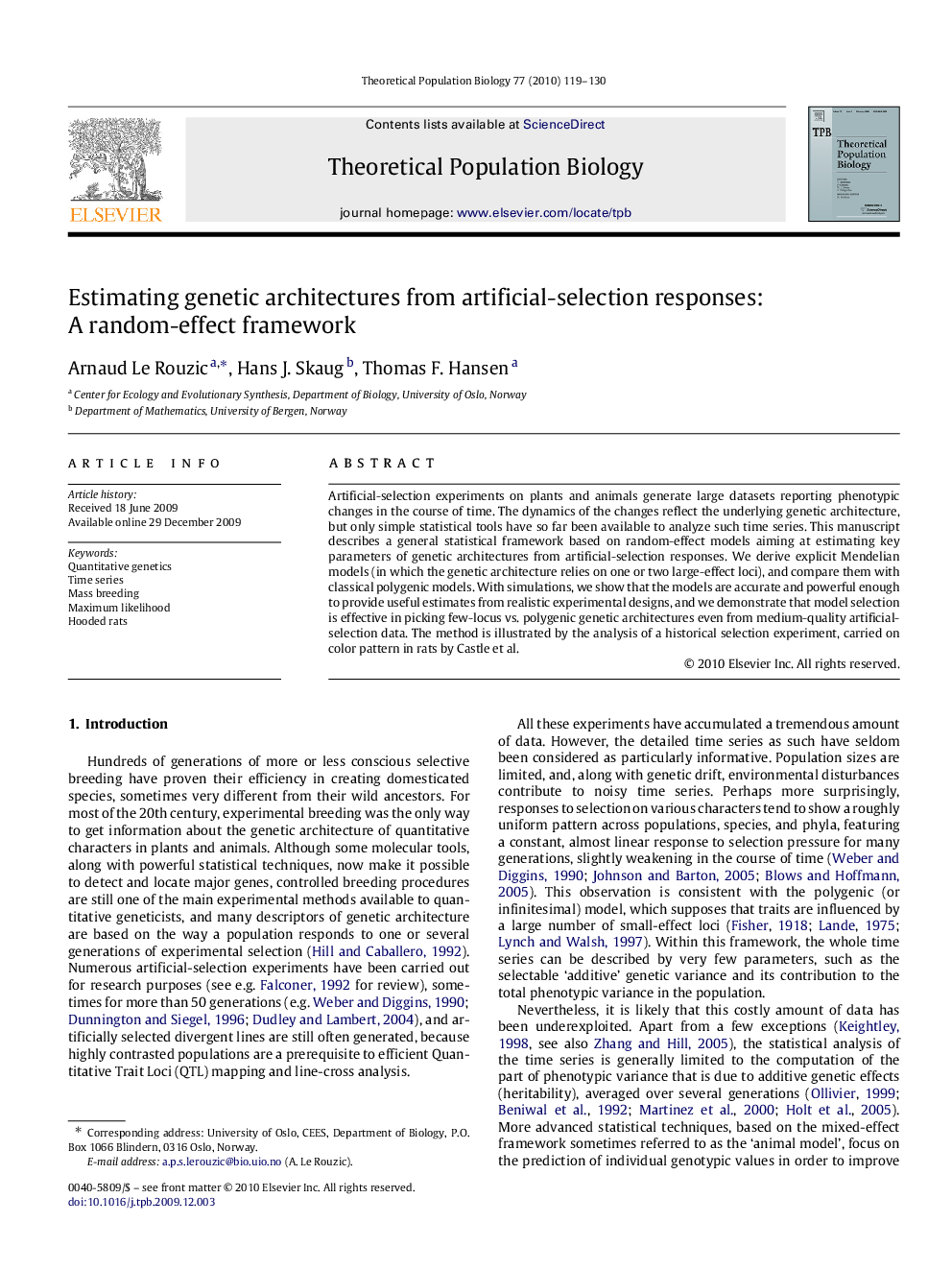| Article ID | Journal | Published Year | Pages | File Type |
|---|---|---|---|---|
| 4502607 | Theoretical Population Biology | 2010 | 12 Pages |
Artificial-selection experiments on plants and animals generate large datasets reporting phenotypic changes in the course of time. The dynamics of the changes reflect the underlying genetic architecture, but only simple statistical tools have so far been available to analyze such time series. This manuscript describes a general statistical framework based on random-effect models aiming at estimating key parameters of genetic architectures from artificial-selection responses. We derive explicit Mendelian models (in which the genetic architecture relies on one or two large-effect loci), and compare them with classical polygenic models. With simulations, we show that the models are accurate and powerful enough to provide useful estimates from realistic experimental designs, and we demonstrate that model selection is effective in picking few-locus vs. polygenic genetic architectures even from medium-quality artificial-selection data. The method is illustrated by the analysis of a historical selection experiment, carried on color pattern in rats by Castle et al.
